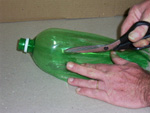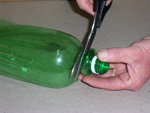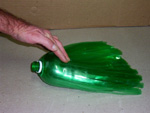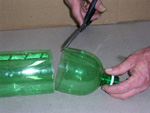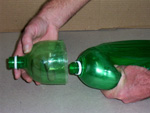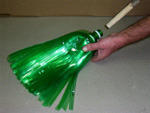An apple a day...puts the doctor out of business. Delicious, versatile and full of fabulous nutrition, this crisp, white-fleshed fruit provides a ton of health benefits.
- Apples are high in fiber and low in calorie, two properties that allow you to feel satisfied and full longer than foods lower in fiber. Since fiber expands in the stomach, there is less room for other foods. Apples contain approximately five grams of fiber -bran cereal, the good old source of fiber contains about seven grams per serving. This same soluble fiber may help reduce cholesterol and prevent colon cancer.
- High water content. Brace yourself. Water intake reduces water retention. High water foods help keep you hydrated. Also, when the body doesn't get enough water the signals are often mistaken for hunger...so less calories are consumed when properly hydrated.
- Low sodium food. Lowering sodium intake also helps to release any water that is being retained. Less sodium equals less bloating and water weight.
- Low glycemic index. The glycemic index ranks carbohydrates, giving higher values to foods that increase blood sugar the fastest: apples rank 35 on a scale of zero to 100. When blood sugar goes up, the body produces insulin and increases hunger. Sugar calls to sugar.
- Several studies indicate that ingredients in apples may be a key in preventing lung, breast, colon and liver cancers.
- Apples are notable for their impressive list of phtyto-nutrients, and anti-oxidants. Studies suggest that its components are essential for normal growth, development and overall well-being. Apples contain boron, necessary to strengthen bones, and flavanoids found only in apples may also protect post-menopausal women from osteoporosis.
- Good quantities of vitamin C, a powerful natural antioxidant. Consumption of foods rich
in vitamin C helps the body develop resistance against infectious
agents
and scavenge harmful, pro-inflammatory free radicals from the body.
- Source of B-complex
vitamins such as riboflavin, thiamin, and pyridoxine (vitamin B-6).
Together these vitamins help as co-factors for enzymes in metabolism as
well as in various synthetic functions inside the body.
- Apple also contains a small amount of minerals like potassium, phosphorus, and calcium. Potassium is an important component of cell and body fluids helps controlling heart rate and blood pressure; thus, counters the bad influences of sodium.
Apple Salsa - Combine all ingredients & mix well.
- 2 cups diced apples
- 1/2 cup diced red bell pepper
- 1/3 cup fresh lime juice
- 1/4 cup diced red onion
- 1/4 cup minced fresh cilantro
- 1 tablespoon honey
- 1/4 teaspoon salt
- 1/4 teaspoon freshly ground black pepper
- 1 jalapeño pepper, seeded and minced







